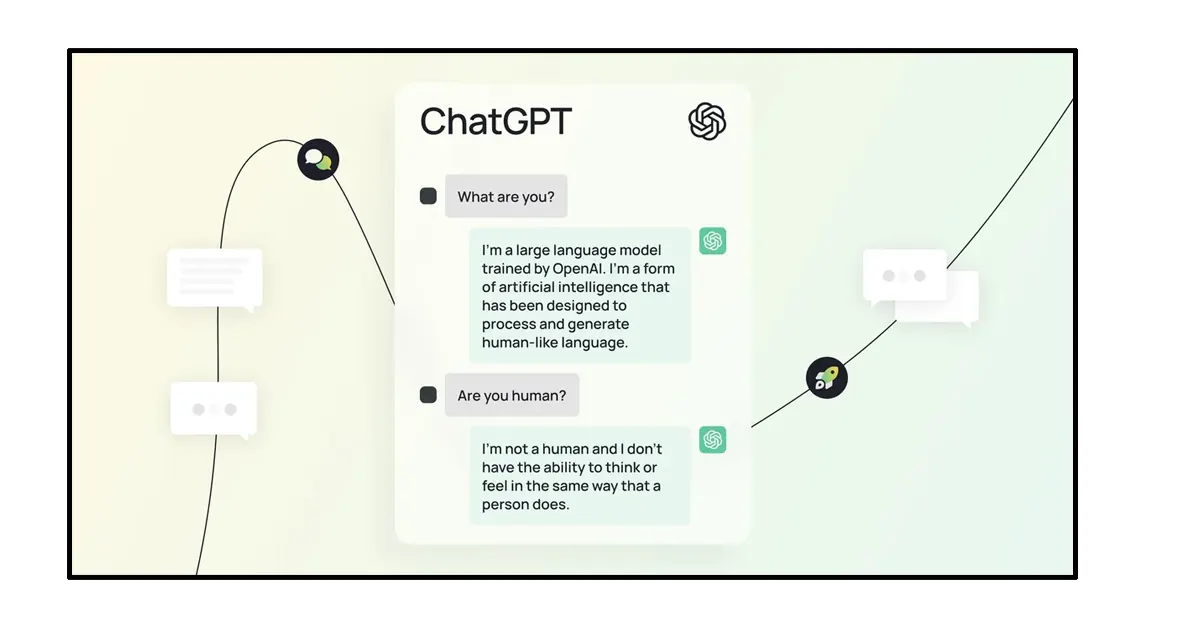Artificial Intelligence-Powered ChatGPTs, or AIPRM, are revolutionizing customer service and how businesses interact with customers. These ChatGPTs simulate human conversation using artificial intelligence technology to provide quick and accurate answers to customer questions. Understanding the role ChatGPTs play in customer satisfaction is key for businesses looking to improve their customer service experience.
Table of Contents
Recognizing ChatGPTand’s AI-Powered Features and Their Contribution to Customer Happiness
ChatGPT is a software that communicates with customers using artificial intelligence capabilities. These ChatGPTares are designed to understand natural language and provide relevant and accurate responses to customer queries. Their method involves scrutinizing user input, employing machine learning algorithms to find out the query’s intention, and producing a suitable response.
The benefits of using AI-powered ChatGPT for customer service are many. They are cost-effective compared to hiring and training human customer service representatives. ChatGPT can handle a large volume of queries , reducing the need for more staff.
They can take you from point A to point B, giving you a flawless trip while at the same time enjoying different views of the Mississippi River. Customers will be more satisfied with the service as a result of knowing they can always get help. Additionally, chatbots are scalable, meaning they can handle an increasing number of queries without compromising on response time or accuracy. Finally, chatbots guarantee a consistent response time, so regardless of the time of day or night, every customer receives the same quality of service.
The Advantages of ChatGPT, an AI-Powered Customer Support Tool
One of the major benefits of using AI-powered chatbots for customer service is cost-effectiveness. It can be costly to hire and train human customer care agents, particularly for companies that get a lot of inquiries. Chatbots reduce expenses by doing away with the need for more employees while still offering effective and efficient customer service.
Another benefit is 24/7 availability. Chatbots can offer help day or night, in contrast to human agents, who have set working hours. This ensures that customers can receive help whenever they need it, increasing their satisfaction with the service.
Scalability is also a key advantage of AI-powered chatbots. As businesses grow and receive more queries, chatbots can handle the increased volume without compromising on response time or accuracy. This ensures that customers receive prompt and accurate responses, further enhancing their satisfaction with the service.
AI-powered chatbots help to ensure consistent responses as well. Unlike a human representative who might give different answers to the exact same query, chatbots use predefined rules and algorithms to provide the same response to all customers asking the same question, no matter the time or day.
How AI-Powered Chatbots Can Improve Customer Experience
| Metrics | Description |
|---|---|
| Response Time | AI-powered chatbots can provide instant responses to customer queries, reducing response time and improving customer satisfaction. |
| 24/7 Availability | Chatbots can be available round the clock, providing customers with assistance at any time of the day, and improving the customer experience. |
| Personalization | AI-powered chatbots can personalize customer interactions by analyzing customer data and providing tailored responses, improving customer engagement. |
| Efficiency | Chatbots can handle multiple customer queries simultaneously, improving efficiency and reducing wait times for customers. |
| Cost Savings | AI-powered chatbots can reduce the need for human customer service representatives, resulting in cost savings for businesses. |
| Accuracy | Chatbots can provide accurate responses to customer queries by analyzing data and using machine learning algorithms, improving customer trust and loyalty. |
Another way chatbots improve the customer experience is by providing quick and accurate responses. Unlike human representatives, who may take time to research or consult others for an answer, chatbots can access a vast amount of information and provide accurate responses in real time. This results in shorter wait times for customers and happier customers.
AI-powered chatbots also bring along the convenience of multilingual support. With the capability to comprehend and respond in different languages, chatbots can cater to customers from various regions. This ensures that all customers, regardless of their will to communicate in any language, get support in their preferred language, enhancing the superior customer experience.
An advantage of AI chatbots is their ability to integrate with other channels. For example, chatbots can be connected with popular messaging apps or social media platforms. This integration provides the opportunity for customers to leverage a marketplace or an organization’s platform in a format that is already popular and well-understood. So, this approach opens new lines of contact with consumers and improves their experience – from start to finish.
Integration with other channels is also a key benefit of AI-powered chatbots. Customers can engage with businesses via their preferred channel by integrating chatbots seamlessly with other communication channels like social media platforms or messaging apps. This omni-channel approach provides clients a seamless and reliable experience, raising their level of contentment in general.
The Importance of Personalization in AI-Powered Chatbots
Personalization is a crucial aspect of AI-powered chatbots that contributes to customer satisfaction. By using customer data, chatbots can provide customized responses that are tailored to the specific needs and preferences of each individual customer. Customers feel respected and understood while dealing with the firm because of this individualized approach.
One way chatbots can personalize responses is by using customer history. By analyzing past interactions and buy history, chatbots can provide tailored solutions and recommendations to customers. For example, if a customer has before purchased a certain product, the chatbot can suggest related products or provide information on upcoming promotions. This personalized approach not only enhances the customer experience but also increases the likelihood of repeat purchases and customer loyalty.
A significant component of personalization within AI-powered chatbots is the cultivation of customer connections. By using customer data and previous interactions, chatbots can engage in more meaningful conversations with customers, creating a sense of connection and trust. By customizing our approach, we can cultivate long-term relationships with clients, making them feel even more satisfied and loyal to us.
Natural Language Processing’s Function in AI-Powered Chatbots
NLP, or natural language processing, is an important technology that powers AI chatbots to understand and answer customer questions. It is a branch of artificial intelligence that deals with the interaction between computers and humans through natural language.
NLP allows chatbots to analyze the input from customers, understand the intent behind the query, and generate an appropriate response. This technology allows for the comprehension of natural language by chatbots, including slang terms, colloquialisms, and changes in expressions. By understanding the context and intent behind customer queries, chatbots can provide more accurate and relevant responses, enhancing the customer experience.
Accuracy in responses is crucial for customer satisfaction. NLP technology helps chatbots interpret and respond to customer queries, reducing the likelihood of misunderstandings or incorrect information. This guarantees that clients get the information they must and , thereby augmenting their contentment with the service.
How AI-Powered Chatbots Can Reduce Response Time and Improve Efficiency
Chatbots can bring a level of personalization that is critical for keeping customers content. This is a prime aspect of AI-powered chat but something can also be said about the chatbot approach in general. A chatbot has the ability to access and make sense of the right data that tells it what the right-on-time, constrained-in-place resolution or experience ought to be after scraping that data from a customer’s conversation with it.
Chatbots can offer responses to customers that are more personalized using their customer histories. By looking at past interactions and buy history, chatbots can offer not solutions and recommendations to customers but ones that are more individualized and appropriate. For instance, if a customer has before purchased a certain product, the chatbot can suggest related products or share information on new promotions for that product. This approach not only makes the customer’s experience better but, also, allows for an increased likelihood of repeat purchases and customer loyalty.
An important aspect of personalization with AI in chatbots is the formation of customer relationships. AI is able to use customer data and past interactions to have far more sophisticated and significant conversations with customers than it could before. This sort of conversation feels more personal, and more trustworthy, to the average customer. It’s not surprising, then, that as we see an advance in AI’s abilities, we’re also seeing the advance of AI’s popularity. More people are coming to rely on chatbots to get their work done and achieve their goals.
Natural Language Processing’s Function in AI-Powered Chatbots
Natural language processing is a vital technology that makes AI chatbots human-like, allowing them power to comprehend and answer human queries. NLP is a subfield of artificial intelligence which deals with the building of dialogue between human beings and machines. Chatbots are, in essence, programs that work like the intermediate help desk between a customer and the business. They are computerized figures on a computer screen that track and understand the customer’s end of a conversation and give them a answer, either through written words or more visually.
Chatbots that use NLP can understand what customers are asking and respond correctly. They don’t match up words and phrases with pre-defined database answers. They respond in an intelligent and dynamic way, which means you can carry on a basic online text conversation with it, even if it’s a bot. Live chats with humans give the appearance of a personality with the emotional inflections, the ‘ums’ and ‘uhs’, that characterize human speech. One would think that to carry it off, a bot would up the ante and use the words ‘um’ and ‘uh’ in a conversation with you, but no: the bot gets the exact flavor of human speech right and knows how to use it.
It is very important to respond accurately to your customers if you want them to be satisfied. Natural language processing (NLP), as used in chatbot technology, is helping to make that happen. The most advanced NLP engines used in the chatbots people are most likely to interact with can understand what you as a customer are saying to them in a way that is equal to human conversation. This means that those bots (like the ones in Facebook messenger or retail websites) can understand you as well as an actual person can.
How AI-Powered Chatbots Can Reduce Response Time and Improve Efficiency
The deployment of AI chatbots with accurate and pertinent reactions necessitates a blend of data capture, data analysis, and the application of machine learning algorithms, along with a healthy process of monitoring and refining.
For chatbot training, it is of the utmost importance to collect and analyze data. Firms amass data on customer inquiries, interactions, and feedback to comprehend what it is that customers want and need. But it is not a matter of collecting data, but also analyzing it. This was best said by the head of the Facebook Messenger platform, Stan Chudnovsky, in an interview with SearchCIO, where he noted that one can have “all the data in the world, but if you don’t process that data into wisdom and insight, you’re not able to communicate in a personalized manner.”
Training chatbots requires the use of machine learning algorithms. The intent of these algorithms is for the bots to learn and improve. This is where all the data you generate or bring to the bot comes into play. When you first interact with the bot, it may not respond correctly or provide you with the “right” answer. It may not even understand your question. Over time, though, it will. When it does, it will give you the right answer. After all, it has a giant look-up table. It can access and remember for next time.
It is vital to check and improve chatbots in a long-term fashion after setting them up. Your method should involve regular reviews to catch weaknesses in your bot’s performance. Remember: the metrics and KPIs you set up at the beginning will largely determine what the bot is going to achieve in the long run. Don’t set up these KPIs on a “set it and forget it” basis. Instead,
check your chatbot on a weekly or monthly schedule and improve it like you would any other part of your business. Bots are becoming more and more intuitive, and the amount of work they can do is slowly but surely rising. In time, it may not be at all uncommon for a human to talk with a bot before being passed off to another human.
The Role of Analytics in Measuring the Effectiveness of AI-Powered Chatbots
To gauge how well an AI chatbot is performing, businesses need to be analytical and assess a bot’s bot quality in three ways, all of which are very important: first, the bot’s conversation quality, which is measured by metrics; second, the customer’s satisfaction rate
and third, the business’s goal conversion rate, which gives businesses a broad perspective on how well the chatbot accomplishes its purpose. All these measurements should work in a potential bot’s favor, not only transforming it into a state-of-the-art bot but also making it work the way it was intended.
Must to track response time because it affects customer satisfaction. Business can identify troublesome or overwhelmed areas by monitoring their response time. This allows them to make improvements and helps them to serve their customers better, which leads to more satisfied customers.
The key metric to track is, of course, customer satisfaction. You can gain valuable insights about how your chatbot is performing by simply asking your customers what they think of it. In what areas is it underperforming or whatnot? Do you believe that your chatbot can reach a score of 80 when it comes to customer satisfaction? If not, what is it scoring at present? Even if your present score is high, say around 90, do you believe your chatbot could do better? If so, where could it do better?
Another essential metric to keep an eye on is the conversion rate. By looking at how many customer inquiries are actually being resolved by a chatbot, the amount that actually turn into something (e.g., a sale, a subscription, a download), businesses can determine chatbot efficacy on both a business outcome basis and a human interaction basis.
Also, the analytics tool offers a way to determine where you need to get better. By analyzing data on customer queries, interactions, and feedback, businesses can identify patterns or trends that may say areas where the chatbot is struggling or where improvements can be made. This information can then be used to make adjustments and improve the chatbot’s performance.
The Future of AI-Powered Chatbots and Their Impact on Customer Satisfaction
The future of AI-powered chatbots looks promising, with the potential for further advancements in AI technology. As businesses continue to invest in AI-powered chatbots, the technology is expected to become more sophisticated and capable of handling even more complex queries and interactions.
The growing popularity of chatbots in customer service is a testament to their effectiveness in improving customer satisfaction. As businesses increasingly adopt chatbots, customers are becoming more accustomed to interacting with them and are beginning to expect the convenience and efficiency they provide.
The potential for further advancements in AI technology means that chatbots will continue to evolve and improve. This includes advancements in natural language processing, machine learning algorithms, and integration with other systems and channels. These advancements will further enhance the capabilities of chatbots and their ability to provide accurate and relevant responses to customer queries.
Staying up-to-date with the latest trends and developments in AI-powered chatbots is crucial for businesses looking to enhance their customer service experience. By staying informed about new technologies, best practices, and industry trends, businesses can ensure that they are leveraging the full potential of chatbots to improve customer satisfaction.
AI-powered chatbots have become increasingly popular in customer service, offering many benefits for businesses looking to enhance their customer service experience. From cost-effectiveness and 24/7 availability to scalability and consistency in responses, chatbots provide a range of advantages that contribute to improved customer satisfaction.
Personalization is a key aspect of AI-powered chatbots that greatly enhances the customer experience. By using customer data and previous interactions, chatbots can provide customized responses tailored to the specific needs and preferences of each individual customer. This personalized approach helps build relationships with customers and increases their satisfaction with the service.
Natural language processing plays a crucial role in enabling chatbots to understand and respond to customer queries conversationally. By accurately interpreting and responding to customer queries, chatbots provide quick and accurate responses, reducing response time and improving efficiency.
AI-Powered ChatGPT: AIPRM Explained
While there are challenges in implementing AI-powered chatbots, such as integration with existing systems and ensuring accuracy in responses, these challenges can be overcome through continuous improvement and monitoring. By continuously training chatbots to provide accurate and relevant responses, businesses can enhance the customer service experience and improve customer satisfaction.
The future of AI-powered chatbots looks promising, with the potential for further advancements in AI technology. As businesses continue to invest in chatbots and stay up-to-date with the latest trends and developments, they have the opportunity to revolutionize customer service and greatly improve customer satisfaction.
If you’re a fan of artificial intelligence and are curious about its applications in various industries, you might be interested in reading an article titled “Stuck in a Janitor AI Rut? Unleash the Power of ChatGPT!” This article explores how ChatGPT, an advanced language model developed by OpenAI, can revolutionize customer service and support systems. It discusses the potential benefits of using ChatGPT in improving response times, enhancing user experience, and streamlining communication processes. To learn more about this exciting development, check out the article here.
FAQs
What is AIPRM?
AIPRM stands for artificial intelligence-powered risk management. It is a system that uses AI and machine learning algorithms to identify and mitigate risks in various industries.
How does AIPRM work?
AIPRM works by analyzing large amounts of data and identifying patterns that indicate potential risks. It then uses machine learning algorithms to predict and prevent those risks from occurring.
What industries can benefit from AIPRM?
Numerous industries, including finance, healthcare, insurance, and cybersecurity, can benefit from the application of AIPRM. It can help identify and prevent fraud, cyberattacks, and other types of risks.
What are the benefits of using AIPRM?
Employing AIPRM can lead to lower expenses, more efficiency, and better risk management. It can also help organizations stay ahead of potential risks and prevent them from occurring.
Is AIPRM safe to use?
Yes, AIPRM is safe to use. It is designed to protect sensitive data and prevent unauthorized access. However, like any technology, it is important to ensure proper security measures are in place to protect against potential threats.
How can I implement AIPRM in my organization?
To implement AIPRM in your organization, you will need to work with a vendor or provider that specializes in AI-powered risk management solutions. They can help you assess your needs and develop a customized solution that meets your specific requirements.







4 thoughts on “5 Strategies for Maximizing Customer Satisfaction with ChatGPT with Personalization in AI-Powered Chatbots”
Comments are closed.